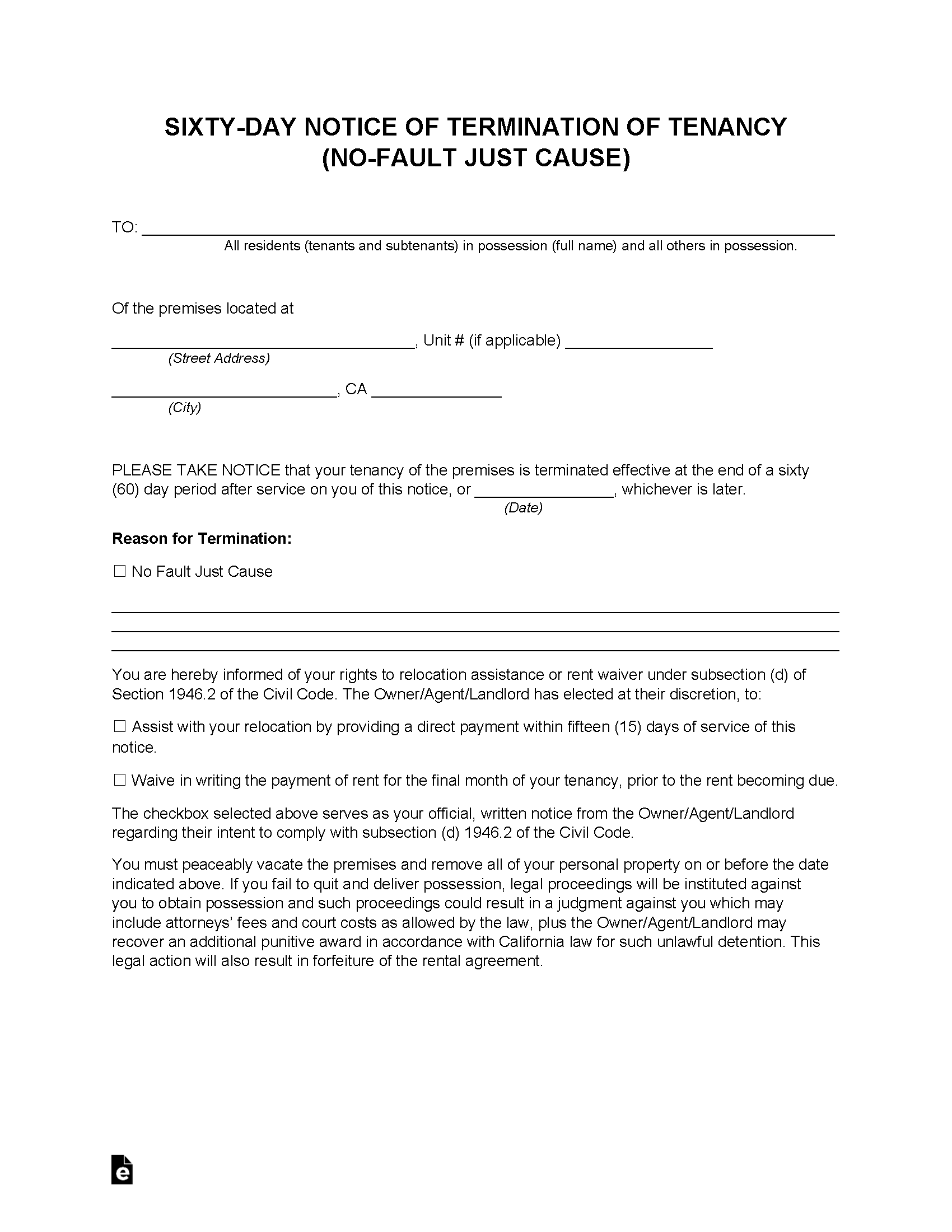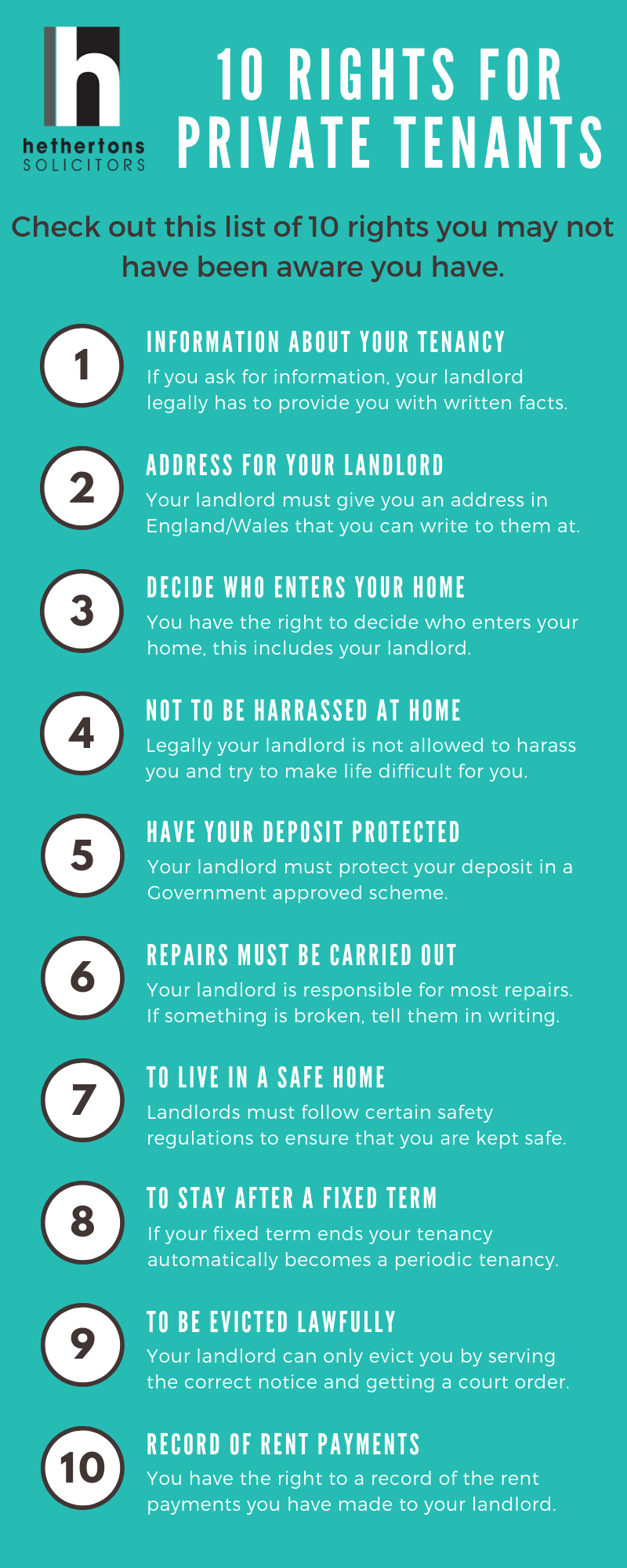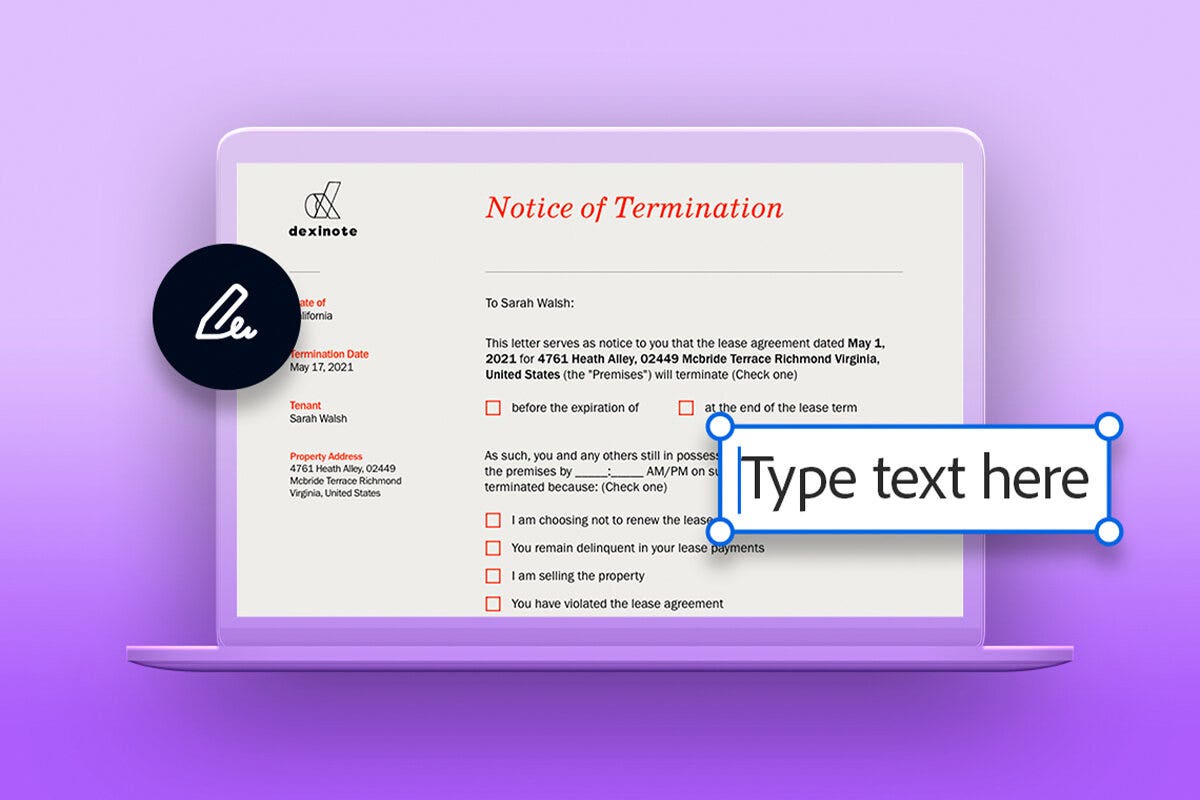Notice requirements
Navigating Lease Breaks: What Tenants Should Know

Understanding Lease Breaking: What Tenants Should Know
Leasing a property comes with a commitment to fulfill the terms outlined in the lease agreement. However, unforeseen circumstances may arise, leading tenants to consider breaking their lease. In such situations, it’s crucial to be informed about the process and implications associated with lease breaking.
Lease Agreement Terms and Penalties
Before contemplating lease breaking, thoroughly review your lease agreement. Most leases include clauses that specify the conditions under which a lease can be terminated prematurely. Additionally, landlords often outline penalties or fees associated with breaking the lease. Understanding these terms is essential to make informed decisions.
Valid Reasons for Lease Breaking
Certain situations may qualify as valid reasons for breaking a lease without facing severe penalties. Common examples include military deployment, health issues, job relocations, or domestic violence situations. Communicate openly with your landlord about the circumstances, providing any necessary documentation to support your case.
Notice Requirements and Communication
Effective communication is key when considering lease breaking. Most leases require tenants to provide a written notice within a specified timeframe. Check your lease for any specific requirements and ensure compliance. Openly discussing your situation with your landlord can sometimes lead to more flexible arrangements.
Financial Implications
Lease breaking often involves financial consequences. In addition to potential penalties specified in the lease agreement, tenants might be responsible for covering the cost of re-advertising the property and any rent lost during the vacancy period. Understanding these financial implications can help tenants plan accordingly.
Subletting and Lease Assignments
Some leases allow for subletting or lease assignments, providing an alternative to breaking the lease. Subletting involves renting the property to another party for a specified period, while lease assignments involve transferring the lease to another tenant. Check your lease agreement for provisions related to these options.
Negotiating with the Landlord
When facing the need to break a lease, consider negotiating with your landlord. Discussing your situation openly and professionally may lead to a mutually beneficial agreement. Landlords, understanding the challenges tenants face, may be willing to work out a compromise that minimizes financial impact.
Legal Advice and Assistance
If negotiations with the landlord prove challenging, seeking legal advice is an option. Consult with a tenant’s rights attorney to understand your legal standing and potential avenues for resolving the situation. Legal professionals can provide guidance on navigating complex lease-breaking scenarios.
Lease Breaking: A Last Resort
Breaking a lease should be considered a last resort due to the potential consequences involved. Exhaust all other options, such as negotiation, subletting, or lease assignments, before deciding to break the lease. Being proactive and transparent in your communication can help maintain a positive relationship with the landlord.
Documentation and Record-Keeping
Throughout the lease-breaking process, maintain thorough documentation of all communication with the landlord. Keep records of notices, agreements, and any supporting documentation for your situation. This documentation may prove crucial in case of disputes or legal proceedings.
Moving Forward Responsibly
Once lease breaking is unavoidable, focus on fulfilling your responsibilities during the
Navigating Lease Termination: Expert Assistance for a Smooth Process

Navigating Lease Termination: Expert Assistance for a Smooth Process
Leaving a lease agreement can be a complex and delicate process for both tenants and landlords. Professional assistance can make this transition smoother and less stressful. In this article, we’ll explore the benefits of seeking lease termination assistance and how it can ensure a hassle-free experience.
Understanding Lease Termination Challenges
Lease termination involves a series of challenges, from understanding contractual obligations to negotiating potential fees. Many tenants and landlords face uncertainties about the proper procedures and legal requirements for terminating a lease. Seeking expert assistance can provide clarity and guidance through these challenges.
Legal Expertise in Lease Agreements
Lease agreements often contain legal complexities that can be confusing for those not well-versed in real estate law. Professional assistance ensures that both parties adhere to the legal requirements outlined in the lease, minimizing the risk of disputes or legal complications. This expertise is particularly crucial for avoiding unexpected penalties or liabilities.
Negotiating Smooth Transitions
Lease termination assistance involves skilled negotiation to create a win-win situation for both parties. Professionals can facilitate discussions, helping tenants and landlords reach mutually agreeable terms. Whether it’s negotiating an early termination fee or ensuring a seamless handover process, expert assistance streamlines the negotiation phase.
Minimizing Financial Impacts
Terminating a lease often involves financial considerations, such as penalties, security deposit handling, or potential disputes over damages. Lease termination assistance helps navigate these financial aspects, ensuring a fair resolution and minimizing the financial impact on both parties. This can lead to a more amicable conclusion and a better chance of maintaining a positive landlord-tenant relationship.
Guidance on Notice Requirements
Lease agreements typically outline specific notice requirements for termination. Failure to adhere to these timelines can result in complications and legal issues. Seeking professional assistance ensures that tenants provide proper notice and landlords respond appropriately, avoiding unnecessary disputes and potential legal consequences.
Documentation and Paperwork Assistance
The process of terminating a lease involves a significant amount of documentation, from the termination notice to the final settlement. Lease termination assistance includes guidance on preparing and reviewing all necessary paperwork, reducing the likelihood of errors and ensuring a smooth and well-documented transition.
Addressing Special Circumstances
Every lease termination situation is unique, and some may involve special circumstances such as job relocations, health issues, or changes in financial situations. Professionals can tailor their assistance to address these specific needs, providing personalized guidance for a more compassionate and understanding termination process.
Maintaining Positive Communication
Lease termination assistance emphasizes effective communication between tenants and landlords. Professionals can act as intermediaries, facilitating open and constructive dialogue to address concerns and find solutions. This communication-focused approach contributes to a more positive experience for all parties involved.
Post-Termination Support
Even after the lease termination is complete, professional assistance can offer ongoing support. This may include guidance on the return of security deposits, handling any remaining issues, and ensuring a clean break between tenants and landlords. Post-termination support helps tie up loose ends and ensures a fully resolved transition.
Balancing Act: Understanding Tenant Privacy Rights

Balancing Act: Understanding Tenant Privacy Rights
Tenant privacy is a fundamental aspect of the landlord-tenant relationship, governed by legal principles designed to safeguard tenants’ rights. This article explores the importance of tenant privacy rights, the legal framework that protects them, and the responsibilities of both landlords and tenants in maintaining this delicate balance.
Foundations of Tenant Privacy Rights
Tenant privacy rights are rooted in the right to quiet enjoyment, a legal concept that guarantees tenants the right to use and enjoy their rented property without interference. This right encompasses not only freedom from unnecessary disturbances but also protection against unwarranted intrusions into personal space.
Landlord Responsibilities and Legal Limitations
Landlords have a duty to respect tenant privacy rights. This includes providing notice before entering the rented premises, typically for repairs or inspections. However, this right is not absolute, and landlords may enter without notice in emergency situations or when there is mutual agreement between both parties.
Notice Requirements for Entry
To maintain a balance between landlord access and tenant privacy, notice requirements are established. Landlords are generally required to provide advance notice before entering a rental property, typically 24 to 48 hours. This notice allows tenants to prepare for the entry and ensures that their privacy is not unduly disrupted.
Handling Repairs and Maintenance
One common scenario where landlord entry occurs is for repairs and maintenance. While landlords have the right to address property issues, they must do so in a way that respects tenant privacy. Providing timely notice and coordinating with tenants to find mutually agreeable times for entry helps strike this balance.
Security Measures and Surveillance
Balancing tenant privacy also involves addressing security measures and surveillance. While landlords have a legitimate interest in ensuring the safety of their property, tenants have a right to live without constant surveillance. Any security measures, such as cameras or access control systems, must be reasonable and respect tenant privacy.
Tenant Responsibilities for Privacy
Tenants also play a role in maintaining their own privacy. Properly securing the property, not causing unnecessary disturbances, and promptly reporting maintenance issues can contribute to a positive landlord-tenant relationship. It’s crucial for tenants to understand their responsibilities in upholding the right to quiet enjoyment.
Legal Protections Against Unlawful Intrusions
Legal protections are in place to guard against unlawful intrusions into tenant privacy. If a landlord violates notice requirements, enters the property without a valid reason, or engages in harassment, tenants have legal recourse. Understanding these protections empowers tenants to assert their rights.
Handling Tenant Information and Data
Tenant privacy extends beyond physical space to include personal information and data. Landlords must handle tenant information responsibly, keeping it confidential and secure. This includes sensitive information such as social security numbers, financial details, and other personal data provided during the leasing process.
Educational Resources for Tenants and Landlords
Educational resources play a crucial role in fostering awareness of tenant privacy rights. Websites like Walenshipnigltd.com offer valuable information, guides, and resources for both tenants and landlords. Accessing these materials empowers individuals
Navigating Lease Termination: A Smooth Closing Process

Navigating Lease Termination: A Smooth Closing Process
Lease termination is a significant step in the landlord-tenant relationship, and a well-executed process is essential for both parties. In this article, we’ll guide you through the key aspects of a smooth lease termination process, covering everything from notice requirements to the final handover.
Understanding Lease Terms and Notice Requirements
The foundation of a successful lease termination lies in a clear understanding of the lease terms and notice requirements. Tenants should review their lease agreement to determine the notice period and any specific conditions for termination. Providing the required notice ensures a smooth start to the termination process.
Initiating Open Communication
Effective communication is paramount when navigating the lease termination process. Initiating an open and honest conversation with the landlord or tenant about the decision to terminate the lease sets the stage for a collaborative and less stressful experience. Clearly communicate reasons, whether it’s a job relocation, change in family circumstances, or other factors.
Conducting a Pre-Termination Property Inspection
Before formally terminating the lease, consider conducting a pre-termination property inspection. This step allows both parties to identify any potential issues or necessary repairs. Discussing these matters in advance can help streamline the final steps of the termination process, avoiding surprises during the final inspection.
Providing Proper Notice to Terminate
Once you’ve understood the lease terms and had open communication, it’s time to provide the official notice to terminate. Tenants typically need to submit a written notice to their landlord, adhering to the specified notice period. This formalizes the intent to terminate the lease and initiates the countdown to the agreed-upon termination date.
Coordinating Lease-End Responsibilities
As the termination date approaches, both landlords and tenants should coordinate their responsibilities. Discuss any specific requirements for cleaning, repairs, or maintenance. Clear communication on these responsibilities minimizes misunderstandings and ensures a smooth transition during the lease termination process.
Finalizing Financial Settlements
Financial settlements are a crucial aspect of the lease termination process. Landlords may need to return security deposits, while tenants should settle any outstanding rent or utility payments. Thoroughly reviewing and addressing financial matters ensures that both parties fulfill their obligations, leaving no loose ends.
Conducting the Final Property Inspection
A comprehensive final property inspection is vital before completing the lease termination process. Landlords and tenants should walk through the property together, noting any changes or damages. This joint inspection helps resolve any disputes about the property’s condition and ensures a fair assessment of the security deposit.
Preparing a Written Agreement
After the final inspection, it’s prudent to prepare a written agreement that outlines the terms and conditions of the lease termination. This document should address the return of security deposits, any financial settlements, and the condition of the property. Having a written agreement helps prevent future disputes and provides clarity for both parties.
Closing Utilities and Notifying Relevant Parties
In the midst of the lease termination process, tenants should close utility accounts in their name and notify relevant parties about the change of address. This
